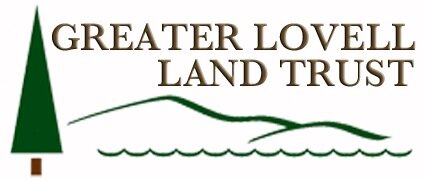Our predecessors understood and depended upon the giving power of the land. They valued every acre for what it could provide. Forests supplied building material and fire wood. Woodland yielded to pastures that returned milk, wool, meat and eggs. Stewarded fields produced life-sustaining crops and forage for farm animals. Family farms often retained a “back forty” wood lot for game, berries and nuts, lumber and firewood. Granite for foundations and mill stones was cut from boulders and ledge outcrops and every farmer held close the location of the prized hornbeams, used for tool handles of all shapes and functions. The giving power of the land was acknowledged and respected…
Water Loggers
Water bodies large and small mirror the health of their ecosystems. Western Maine’s lakes and ponds are no different. They submit to the onslaught of natural and man-made impacts throughout the watershed and battle to absorb, buffer, or flush whatever comes their way—rain and storm-water carrying atmospheric pollutants; phosphorus from our backyard fertilizers; road salt, sand, and silt washed from paved and impervious surfaces; nitrogen from pet, wildlife, fish, and bird waste—the list is long. Our role is to identify, mitigate, and, whenever possible, prevent these threats in order to keep the lakes healthy for the generations to come…
Rare Carnivorous Plants
The Newest GLLT Reserve
My intention yesterday afternoon was to focus on the plants and trees at the Greater Lovell Land Trust’snewest reserve, Long Meadow Brook. But I also wanted to check out the new parking area created as part of an Eagle Scout project by Bridgton’s Troop 149…
2017—Year of the Lichen
Recipes for a Rural Kitchen
Through the frosty winter days and the steaming days of summer we may forget to reflect on how fortunate we truly are to spend our days in such a beautiful place. Rich farmlands, clean water, and a landscape that changes appearance as frequently as a teen changes clothes. It’s no wonder that keeping up our pantries is a challenge!
Moi—Bull in a China Shop
Several inches of fresh snow topped with freezing rain two days ago and the world is transformed. I couldn’t decide whether to wear snowshoes, micro-spikes or neither. I choose micro-spikes, which seemed a good choice at the start, but not long into my 3.5 hour tramp through the Greater Lovell Land Trust’s John A. Segur Wildlife Refuge off Farrington Pond Road…
Experimental Forests
Almost one-hundred years ago, Congress authorized the US Forest Service to establish a network of experimental forests on National Forest System lands. Long-term research was begun exploring topics such as ecosystem processes, forest management techniques, wildlife and their habitats, and factors that affect forest growth and health…













